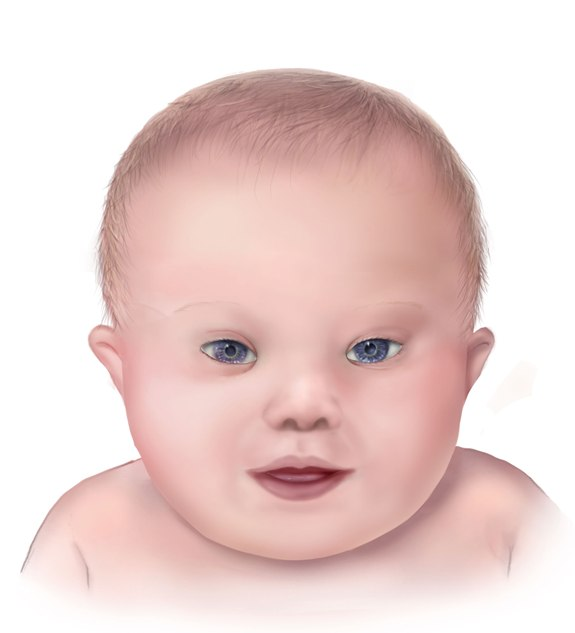I remember my first encounter with a child who had Down syndrome vividly, even though it happened many years ago. It was during my fifth year in medical school, on a routine ward round in the emergency department. We were called to see a patient with a resolving case of diarrhea. However, upon entering the room, something immediately struck me as different.
The child we were asked to examine was incredibly flexible, beyond what I'd typically expect to see. As we continued our assessment, it became apparent that she struggled to articulate comprehensible words at the age of 3years. It was then that my professor prompted us to observe closely. He began pointing out subtle physical characteristics: the low-set ears, the gap between her toes, and the single crease on her palms. It was like piecing together a puzzle, and suddenly, it clicked - she had Down syndrome.
Now, let's break it down in simple terms.
What is Down syndrome?
Imagine your body is a book filled with instructions on how to grow and develop. These instructions come in tiny chapters called chromosomes. Most people have 46 chapters, but someone with Down syndrome has an extra copy of one of these chapters, called chromosome 21. That's why doctors call it "Trisomy 21."- I dont know if this reveals the picture but let me break it down further.
In essence, DOwn syndrome is when there is a problem with the genes. In Down syndrome, the problem is the chromosome. Now chromosomes comes in pairs and they are 23 pairs. In downs, chromosome 21 is not a pair, instead chromosome 21 comes in 3. So instead of 46 chromosomes, it is 47
How does Down syndrome occur?
Trisomy 21: It's like having an extra copy of chromosome 21 in every cell of your body. Instead of two copies, there are three, causing Down syndrome. This is the cimmonest way people acquire Down syndrome.
Translocation Down syndrome: Sometimes, a piece of chromosome 21 breaks off and sticks to another chromosome. Even though the total number of chromosomes remains the same, this extra piece can still lead to Down syndrome.
Mosaic Down syndrome: Imagine a patchwork quilt, where some squares have two copies of chromosome 21 and others have three. That's Mosaic Down syndrome - a mix of cells with different numbers of chromosome 21.
What are the features of Down Syndrome?

By Centers for Disease Control and Prevention, National Center on Birth Defects and Developmental Disabilities - CDC, Public Domain, wikimedia
People with Down syndrome often have almond-shaped eyes, a small nose, and a tongue that sticks out a bit. They may also experience developmental delays and health issues like heart defects and respiratory infections. It's like they have a unique blueprint that makes them who they are.
What are the risk factors for having Down syndrome?
The chances of having a baby with Down syndrome increase with maternal age, especially for women over 35. There are also genetic factors and certain health conditions that can slightly raise the risk. However, most babies with Down syndrome are born to parents with no known risk factors.
Can Down syndrome be prevented?
Down syndrome is a part of who a person is, and it can't be prevented. However, there are ways to manage the condition and reduce the risk of certain health issues. Prenatal screening, genetic counseling, and maintaining a healthy lifestyle can all play a role in supporting individuals with Down syndrome and their families.
It is very important to note that each person with Down syndrome is unique, with their own strengths, challenges, and potential. It's also important to understand and support them, just like we do for anyone else.
Thanks for your contribution to the STEMsocial community. Feel free to join us on discord to get to know the rest of us!
Please consider delegating to the @stemsocial account (85% of the curation rewards are returned).
You may also include @stemsocial as a beneficiary of the rewards of this post to get a stronger support.